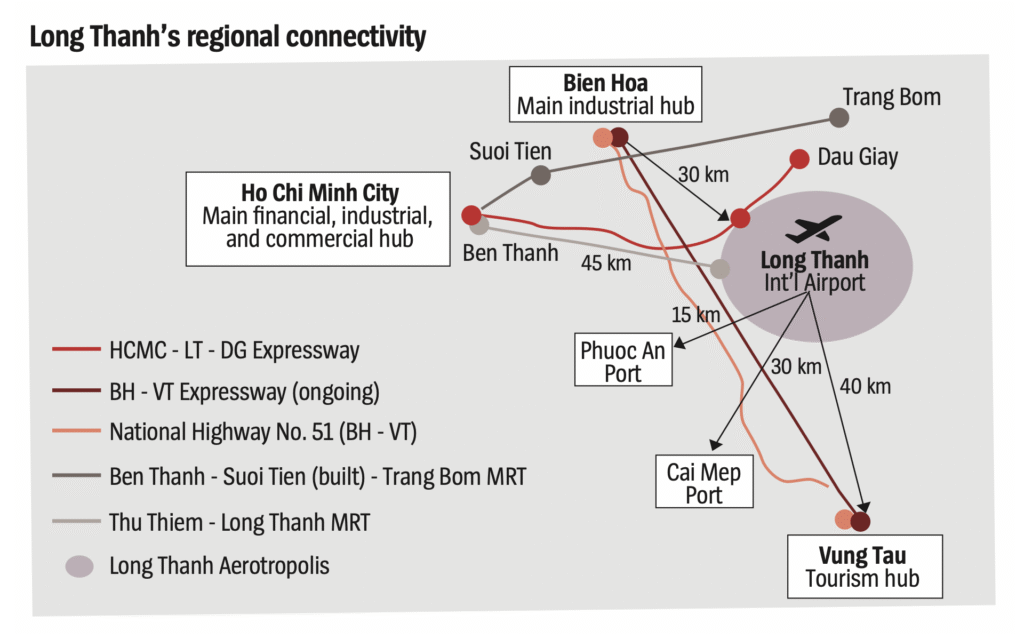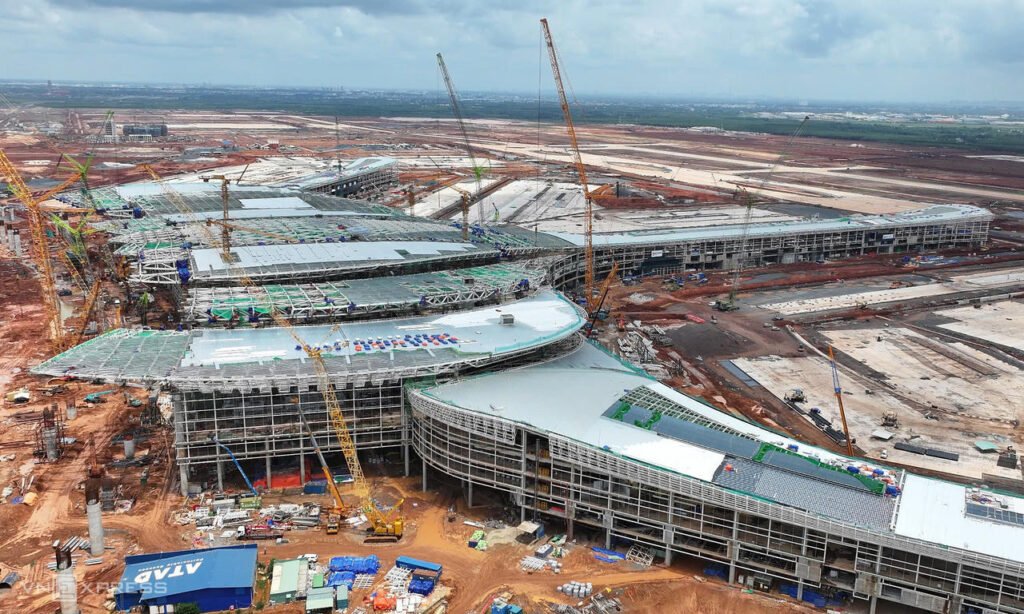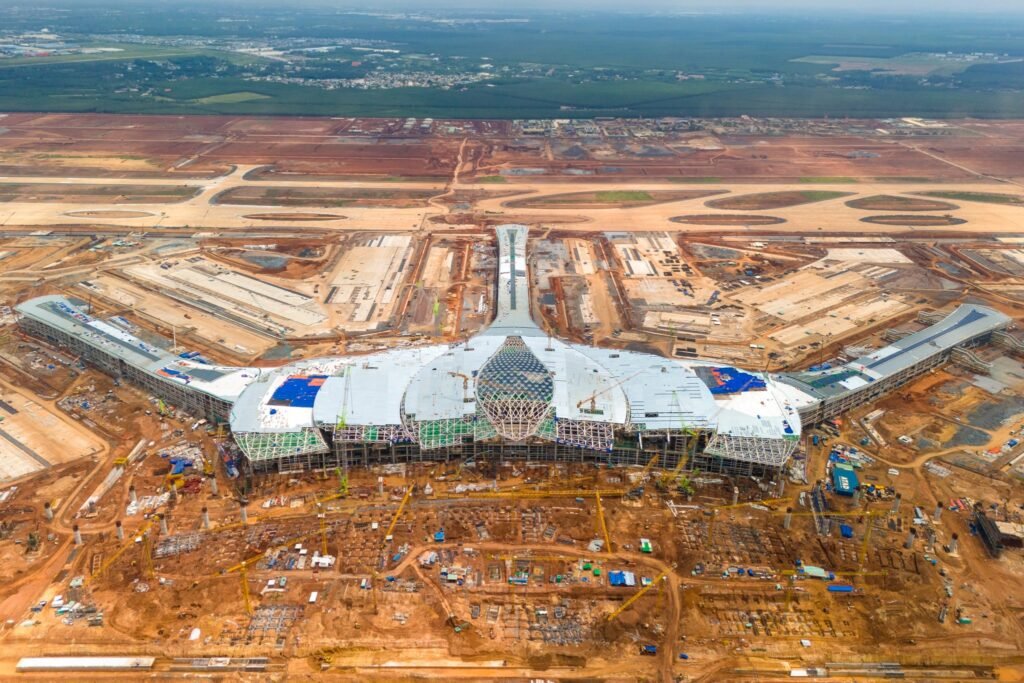The Strategic Plan for Long Thành International Airport (LTH)
The Civil Aviation Authority of Việt Nam (CAAV) has announced the definitive operational plan for the new Long Thành International Airport (LTH) in Đồng Nai, confirming its status as a monumental national project designed to transform the country’s aviation sector. The airport is on track to begin its phased rollout with technical flights in December 2025, with official commercial flights scheduled to commence in June 2026.
Establishing the Dual-Hub Operational Model
The central policy of the Vietnamese government is to establish a synchronized “twin-port” system that ends chronic congestion and maximizes efficiency. This plan outlines a clear redistribution of traffic between the two facilities:
Long Thành (LTH) is designated as the primary national and regional transit hub. It will eventually handle approximately 80% of all international flights (particularly long-haul and scheduled routes) and a small portion (10%) of domestic transit traffic.
Tân Sơn Nhất (SGN) will be redefined as a high-efficiency, specialized domestic hub, focusing on nearly 90% of local routes.
This strategic separation is intended to immediately relieve capacity constraints at SGN while firmly positioning LTH to compete with major regional hubs.

The Aerotropolis and Economic Growth Strategy
The vision for LTH extends far beyond air travel; the government is executing a comprehensive plan to turn the airport into a massive economic engine modeled after an Aerotropolis. This strategy has two major thrusts:
Air Cargo and Logistics: LTH is designed to be a dedicated regional air cargo hub, taking over all international freight operations from SGN. This move is crucial for modernizing logistics, strengthening Vietnam’s role in global supply chains, and boosting high-value exports.
Trade and Services: Provincial authorities are simultaneously planning to establish a Free Trade Zone (FTZ) and an integrated commercial service area around the airport. This ecosystem is specifically designed to attract significant foreign investment in high-value sectors, including finance, commerce, and, critically, MICE tourism.

Accelerating MICE Tourism
Long Thành is poised to unlock the full potential of Ho Chi Minh City’s MICE tourism sector. By resolving the capacity limitations that prevented large delegations from using SGN, LTH’s scale and ability to handle direct, long-haul international flights will make the Southern Key Economic Zone a significantly more accessible and competitive destination for global events.
Prioritizing Infrastructure Connectivity
The success of the dual-hub model is contingent on seamless ground travel. To ensure this, the government is prioritizing the development of critical connecting infrastructure. This includes accelerating key expressways (such as the HCMC-Long Thành Expressway) and planning future rail links to ensure a reliable 30–45 minute travel time to the city center, guaranteeing a professional and efficient experience for all travelers.


